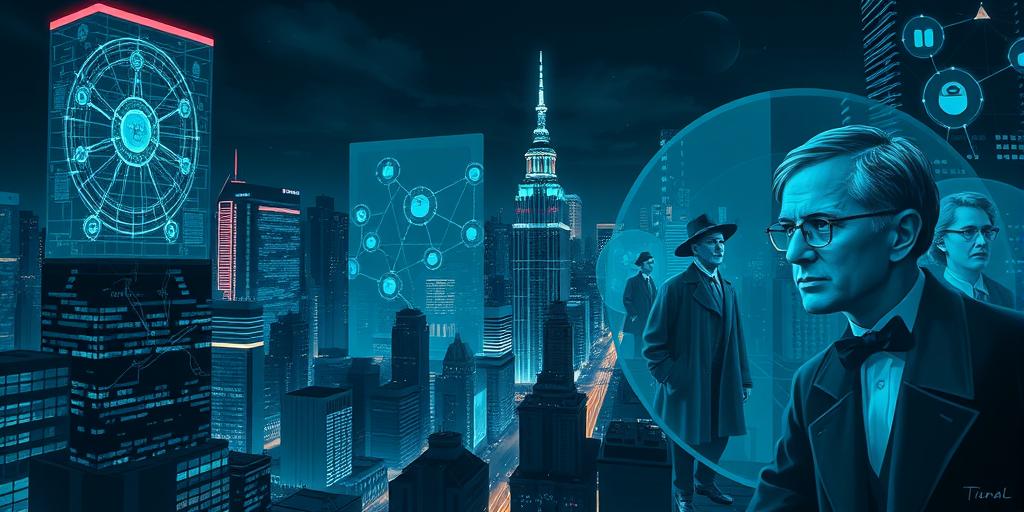How Cybersecurity Pioneers Built the Foundation We Use Today
Have you ever wondered about the unsung heroes who laid the groundwork for the digital security we rely on today? This isn’t just a story about code and firewalls; it’s a gripping narrative of innovation, resilience, and the relentless pursuit of a safer digital world. Buckle up, because we’re about to embark on a journey through time to discover the cybersecurity pioneers who shaped the landscape of online protection as we know it. Their ingenious solutions, born from necessity and ingenuity, are the bedrock upon which our modern digital defenses are built. Prepare to be amazed by their contributions and understand how these pioneers transformed the internet into the more secure space we use today.
The Dawn of Cybersecurity: Early Challenges and Ingenious Solutions
The early days of computing were a wild west, with little consideration given to the security implications of a connected world. As networks grew, so did the threats. Pioneers like Anita Borg, a computer scientist and advocate for women in technology, didn’t just contribute to the field directly; she also fostered a diverse community of problem-solvers, acknowledging that diverse perspectives lead to more robust and resilient cybersecurity strategies. This was pivotal, as the challenges were vast: from simple password cracking to the burgeoning threat of viruses and malware. Early cybersecurity wasn’t about sophisticated algorithms and artificial intelligence; it was about clever workarounds and meticulous attention to detail. Think of the development of the first antivirus software, or the creation of the initial firewalls – often built from simple routing rules and dedicated hardware, rather than the complex software we use today. These were true acts of ingenuity, born out of a deep understanding of the technological limitations of the time, demonstrating how pioneers addressed cybersecurity concerns in a world without advanced cryptography and sophisticated machine learning techniques that we have now. These innovations laid the foundation for modern cybersecurity practices, proving that even rudimentary understanding can effectively address security threats.
The Role of Government and Military
Early cybersecurity efforts also received a significant boost from government and military organizations. These institutions recognized the potential vulnerabilities of their own systems and started investing in research and development of security measures. The development of encryption techniques, initially for military communications, eventually found its way into civilian applications. The necessity for secure communication and data protection fueled innovation, leading to breakthroughs that we still benefit from today. Government involvement was critical, providing both the funding and the motivation to push the boundaries of what was possible. This government investment in foundational cybersecurity infrastructure is often overlooked, but it created the necessary baseline that all further developments built upon. These early government-backed initiatives are a testament to how early adopters recognized the evolving threat landscape early on. Without such initial investment, the rapid evolution of cybersecurity might have been significantly delayed.
The Rise of the Internet and the Growing Threat Landscape
The explosive growth of the internet in the 1990s presented an entirely new set of challenges. Suddenly, the threat landscape expanded exponentially. The early internet was largely unsecure, and pioneers had to adapt quickly to the new realities. The creation of the first intrusion detection systems (IDS) and the development of more sophisticated encryption algorithms marked significant milestones. The focus shifted from protecting individual machines to securing entire networks, leading to the emergence of network security as a distinct field. The evolution of cyber threats, coupled with the increase in the adoption rate of internet technology, meant cybersecurity solutions needed to evolve as well, creating a positive feedback loop that continues to this day. These pioneering steps laid the foundation for the complex network security protocols that protect the internet today.
The Emergence of Ethical Hacking
Alongside the rise of malicious actors, a new breed of cybersecurity professionals emerged: ethical hackers. These individuals used their skills to identify vulnerabilities in systems before malicious actors could exploit them. Ethical hacking played a crucial role in improving the security of software and networks. Their insights and findings were instrumental in shaping the development of secure coding practices and penetration testing methodologies, leading to improved system robustness and resilience. The contributions of these early ethical hackers were critical in shaping the evolution of defensive cybersecurity capabilities. Ethical hacking provided an essential adversarial perspective, leading to improvements in system security, and ensuring that security was not solely reactive, but proactive. This focus on proactive security measures is still a core aspect of modern cybersecurity strategies.
Modern Cybersecurity: Building on the Foundations
Today’s cybersecurity landscape is vastly more complex than its predecessors. We’re facing sophisticated attacks from state-sponsored actors, organized crime syndicates, and lone wolves. However, the foundation laid by the pioneers of cybersecurity remains crucial. Their innovations and dedication continue to inspire and guide the development of new technologies and practices. Modern solutions, such as cloud security and AI-powered threat detection, are all built upon the core principles that these pioneers established. Without the groundwork of these pioneers, modern cybersecurity practices would be far less effective in combating the vast array of modern cyber threats.
The Importance of Continued Innovation
The fight against cybercrime is a never-ending battle. As attackers become more sophisticated, so must our defenses. The spirit of innovation that defined the early days of cybersecurity must continue to drive progress. This requires a commitment to research, education, and collaboration across the industry and globally. This is because the impact of cybersecurity threats spans geographical boundaries. The next generation of cybersecurity professionals must be equipped with the skills and knowledge necessary to face the challenges of tomorrow. Staying ahead of the curve is a dynamic and ongoing process. That’s why continuing the tradition of innovation is so important in modern cybersecurity.
The Future of Cybersecurity: A Collaborative Effort
The future of cybersecurity depends on continued collaboration between governments, industry, and individuals. Sharing information, developing common standards, and investing in education are crucial. Only through collective effort can we create a truly secure digital world. The legacy of the cybersecurity pioneers is a call to action – a challenge to innovate, collaborate, and protect the digital realm we all inhabit.
Cybersecurity is not a spectator sport. It’s a team effort that demands our constant vigilance and proactive involvement. Don’t just be a user; be a champion of digital safety. Let’s honor the legacy of cybersecurity pioneers by working together to build a safer future!













